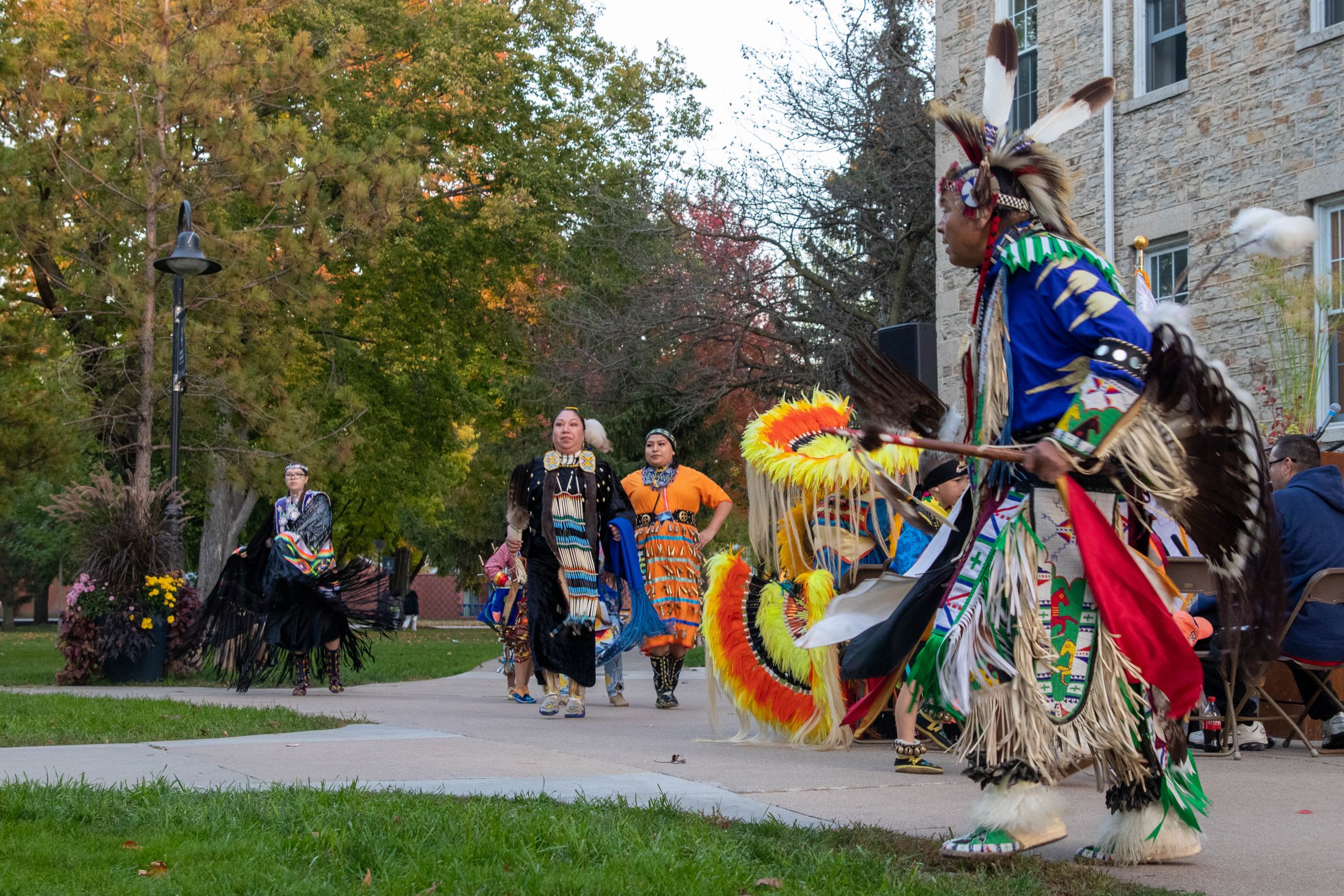Lawrence University hosted its 7th annual Indigenous Peoples Day celebration on Main Hall Green on Monday, October 10 from 5 p.m. to 7:30 p.m. Lawrence University Native Americans (LUNA), the Diversity and Intercultural Center, the Center for Spiritual and Religious Life, the Appleton Area School District (AASD) and the National Endowment for the Humanities (NEH) collaborated to organize the event.
LUNA co-president Mahina Olores, a senior, said that the celebration is typically the biggest event for Indigenous students at Lawrence.
While the event has typically focused on celebrating Indigenous groups living in the Appleton area, Olores and his co-president Em Gajewski, a junior, expanded the celebration to represent a more diverse variety of Indigenous identities this year, including Navajo, Oneida, Menominee and Polynesian peoples.
“It is important to us LUNA leaders this year to emphasize that indigeneity doesn’t just mean the local population, but all indigenous people internationally,” said Gajewski.
Olores opened the celebration with a speech honoring the LUNA leaders who came before him. President Laurie Carter also appeared to thank the guests and organizers for their contributions.
Dennis Kenote, Elder and Chairman of the Menominee Language and Culture Committee, spoke about the Indigenous history of the Appleton area, gave a traditional prayer and delivered a speech in the Menominee language.
Ron Corn Sr., Tribal Chairman of the of the Menominee Nation, urged Indigenous and non-Indigenous people to remember their similarities despite their cultural differences. He also expressed pride at the progress that Indigenous people have made throughout history while looking forward to greater equality for the next generation.
Former LUNA president Shelby Siebers (Class of ‘20), who now works as a Native Organization advisor in the Appleton Area School District, led Indigenous high school students in a performance of Oneida songs. Next, Navajo artist and community healer Kristina Nez Begay provided a Drumming Dreams guided meditation session.
Dancers from the Oneida Nation performed ceremonial dances that featured drumming, chanting and traditional jingle dresses and shawls. The event also featured Hawaiian, Aotearoa and Tahitian hula dancers, led by Malia Chow of Nā Hale. Olores, who identifies as Kānaka Maoli (Native Hawaiian) hopes that the performance will demonstrate the immense skill involved in hula dancing while breaking down common misconceptions about hula and Hawaiian identity.
“Media portrays that [hula] is easy and used to seduce men, when actually, it was how we preserved our language and our storytelling. Those aspects of our culture were illegal into the 1900s, and not a lot of people know that,” said Olores.
The show closed with a performance of Aloha ‘Oe, a traditional Hawaiian farewell song written by Hawai’i’s last monarch, Queen Lili’uokalani. It commemorated the historic resilience of Hawaiian culture despite U.S. colonization.
Two local Indigenous companies provided free traditional Indigenous food for the event. Medicine Kitchen, run by Mikiya Alloway and Miya Goodeagle of the Menominee Nation, served Native fusion cuisine aimed at promoting both physical and spiritual wellness. The Oneida Cannery, a Native agricultural community that provides food security for Native peoples, served farm-fresh Indigenous food. LUNA also ran a table featuring butter mochi, a modern Hawaiian Japanese fusion snack, and haupia, a traditional Polynesian dessert.
Gajewski, who identifies as Ojibwe, expressed that they want to recognize the resilience of Indigenous people while honoring the trauma of colonization.
“Families that were not affected by colonization don’t necessarily deal with the same struggles that we do of losing your language, homelands and even having families torn apart,” she said.
Sophomore Cesar Donaire, a LUNA member, emphasized the importance of community amongst Indigenous peoples. He hopes that Indigenous Peoples Day can shift attention away from colonizer narratives and start uplifting Indigenous stories while providing an opportunity for Indigenous and non-Indigenous communities to foster communication and understanding.

They also emphasized the importance of removing the stigmas and stereotypes associated with Indigenous people, particularly the “mythicization” of Indigenous people and cultures.
“It’s a recognition of the fact that we have been here,” said Donaire. “We have been mistreated, lied to, given false promises by the government, displaced, removed from our own homes, judged, criticized and stigmatized every day for generations. This is a celebration of what we were able to hold onto and preserve for future generations.”
Gajewski echoed the sentiment and emphasized that she wants Indigenous people to be proud of their heritage.
“We’ve come such a long way just to be seen and heard. We’ve put in the hard work, and Indigenous Peoples Day is a day where we can be the ones celebrated for once,” said Gajewski.



